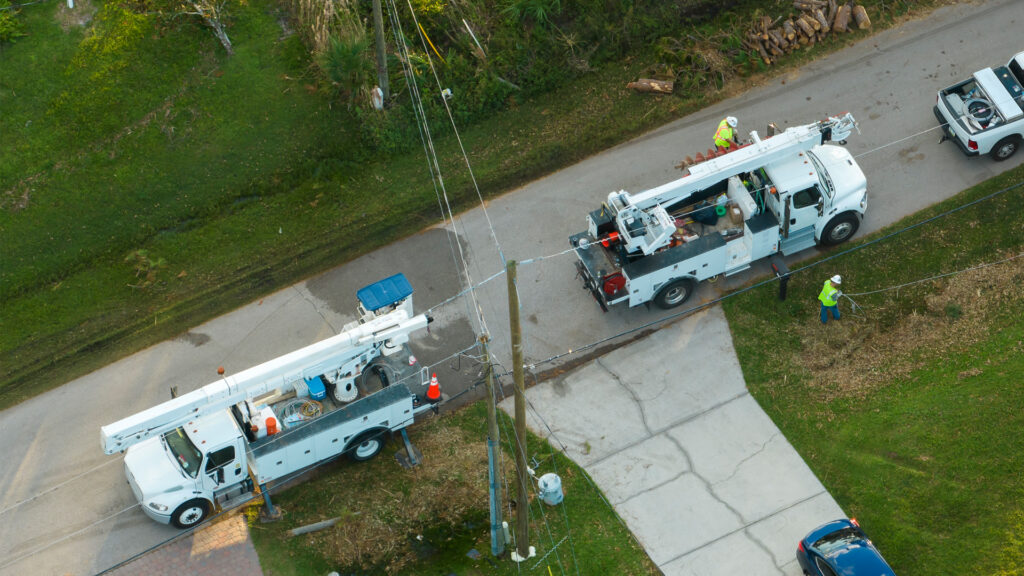By Morgan Scott, Electric Power Research Institute
As the Sunshine State rebuilds from this past season’s destructive hurricanes, Florida can reduce the impacts of these storms in the future by taking a data-backed approach to reconstruction today.
Data on everything from the likelihood of future power outages, the size of potential storm surges and the threat of tornadoes can help guide rebuilding decisions.
Proactively considering climate and power system performance data can limit the damage caused by future storms and make recovery efforts faster and less costly.
Investing in data-informed analysis and solutions now can pay dividends later as extreme weather events become more common and potentially more severe.
More accessible data
Companies need data to understand how climate change will impact the power grid, but many of the important climate and power system data is proprietary or hard to access.

Even data from publicly funded research conducted by universities or government agencies is often stored in a way that makes the data inaccessible to many potential users. While lots of great data exists, it’s often not being leveraged by the power sector.
Some organizations, such as the Electric Power Research Institute (EPRI), are working with government entities such as the National Oceanic and Atmospheric Administration (NOAA), Argonne National Laboratory, Pacific Northwest National Laboratory and the National Renewable Energy Laboratory, to make public data easier to access while also working with data creators to fill critical data gaps.
EPRI works to advance the clean energy transition while maintaining reliability, affordability and resiliency and is funded by hundreds of organizations in the energy and government sectors around the world. EPRI members help inform the development of our annual research portfolio, identify critical and emerging electricity industry issues, and support the application and technology transfer of EPRI’s research and development.
However, considerable additional effort is needed to get this relevant data into decision-makers’ hands.
Data could be made more accessible by optimizing and storing it on the cloud instead of individual machines. Additionally, tools that make the data less abstract (e.g., consistent naming conventions and formats) while streamlining the mode of access would be valuable. Ultimately, more accessible data would help utilities, regulators and other stakeholders be better informed about how and where we can focus our collective efforts.
Data-backed rebuilding
Despite the obstacles in leveraging climate data, historical hurricane data such as the International Best Track Archive for Climate Stewardship (IBTrACS) is readily available for Florida organizations rebuilding from hurricanes or considering proactive investments to make their infrastructure more resilient.
Because of building codes, Miami-Dade and cities considering building new bridges must incorporate data about the height of storm surges, the strength of winds and the likelihood of future hurricanes when deciding how and if to begin construction.
Similarly, utility leaders can examine how different assets perform in extreme heat to ensure electricity keeps flowing during record heat waves. Fortunately, Miami residents need to not look too far for a model.
In 2023, Tampa created a “Climate Action and Equity Plan,” which highlighted proactive actions it can take as a vulnerable, coastal city to protect itself against extreme weather. Among recommendations, the city plans to use future conditions criteria for capital improvement projects, planning and permitting, establish resilience-building practices and create planning overlay zones that relate to future sea-level rise impacts.

In South Florida, some of this work is already underway, with Florida Power & Light (FPL) hardening or undergrounding power lines that serve critical infrastructure.
The large utility company has also installed more than 220,000 intelligent devices that have made FPL’s electric grid “smarter” by helping to proactively correct issues before they happen, avoid outages altogether and restore power faster. These are reasonable steps, and more investment can further enhance the state’s resilience to weather extremes.
By letting historical and projection climate information and research on what has worked in other communities guide the rebuilding process, Florida can continue to put itself on a path toward climate resilience.
Instead of simply rebuilding what was, data and research can help Miami prepare for and thrive in a changing climate.
Morgan Scott is vice president of Sustainability and Global Outreach for Electric Power Research Institute, or EPRI. Banner image: Utility poles toppled by a hurricane. This opinion piece was originally published by the Miami Herald, which is a media partner of The Invading Sea.
Sign up for The Invading Sea newsletter by visiting here. To support The Invading Sea, click here to make a donation. If you are interested in submitting an opinion piece to The Invading Sea, email Editor Nathan Crabbe at ncrabbe@fau.edu.



